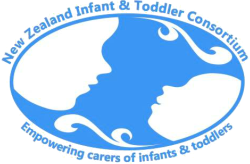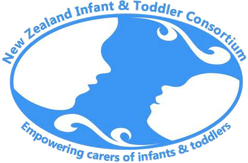A question from a parent…"I am going back to work soon and am wondering if you can help guide me. What are some of the key things to look for when seeking the 'right' caregiver for your infant?"
Dear Baby,
Soon it will be time for me to go back to work and I have been wondering about the caregiver who will be with you during these times. I want to feel a sense of security from knowing that you are in safe, capable hands. This is incredibly important as I entrust your care and wellbeing into the hands of someone else.
I want to leave you with someone who can feel confident and capable with you. They will respond to you with care and respect. I will need to find out what respect means to this caregiver? What does it look like and what will it feel like for you and this person? How similar or different is it from my idea of what that is?
This won’t be easy of course, and the relationship you will establish with this caregiver, in terms of trust and security will depend on my relationship with this person in terms of trust and security also. This is a big step!
I am going to begin to work out how I can choose this person with an open dialogue. I will want to share my hopes and needs and listen about the experiences this caregiver can share to help me decipher how well we can work together. I want to ensure that I feel there is a goodness of fit in terms of personality for me and with your temperament. I will learn about this person’s childhood, values, the life experiences that they cherish or struggle with.
I will need to find out the types of experience this person has had with similar aged infants and about their child development knowledge? What have been their challenges in the past and what were the memorable moments? What did the caregiver learn about themselves from these experiences? Are they open to new learning and ideas?
I will look at their practical experience in how they care and I will share how I care for you -– as I need to know how this person will actively care for you – feeding a bottle, preparing food, putting you to bed, changing your nappy, bathing you, dressing you, comforting you – all the intimate care moments that serve your needs. How do they value these kinds of experiences?
This will help me understand how you respond to them and support how they get to know you, understand your cues, attune to you, talk with you about what is about to happen, handle your body and give you time and space, to show responsiveness in building their relationship with you. I need to know they can be clear in setting limits, accept your expression of feelings and confident to be emotionally present with you.
They will have a sense of humour as well as a sense of inner calm about them. They will understand about emotional intelligence and not feel overwhelmed by your emotions. They can respect your emotional integrity and communicate sensitively and clearly. The purposeful communication they will have with you is important in how they accept you, see you, hear you and understand that you can communicate with your body and gestures long before you speak.
The caregiver will provide you with recognisable and consistent patterns to the day. They will need to be flexible and comfortable with this kind of predictability to the day.
Our dialogue will help me work out the ease with which we can communicate about things that will come up. I will look for an openness and warmth in our exchanges and the ability to listen and problem solve. This will be important in building our trust with each other. As issues arise I need to know this caregiver can bring it to my attention and we can work through it together. We will need to work out how we effectively communicate about the days and nights and the transitions.
I will want to know that this caregiver appreciates all you can do for yourself and give you the opportunity to participate as much as you can in your care experiences. This will support an unhurried environment and special time in together allowing for full attention. These times together are rich in building the connection and valued as opportunities with each other. With this awareness for emotional refuelling you will be better able to explore and play.
I want you to have time to play, uninterrupted and with freedom to move as you develop and grow over time in a prepared environment. This will mean the caregiver can create a safe and challenging space to allow you to accomplish this. This means the caregiver won’t need to feel that you need to be entertained, to get through the day. The way you are seen and heard is authentic and realistic for your development.
I need this to be an enduring relationship, and their commitment to this family is important. The continuity in your care helps you build healthy stable attachments and supports your future healthy secure relationships.
This caregiver will have integrity in all that they represent. The sensible qualities for trust for the visible and tangible and practical aspects of the relationship require the capacity to be responsive, consistent, reliable and objective; and the more sensitive aspects of trust - the emotional intelligence, and qualities such as empathy, intimacy, and the more intangible dispositional qualities will feature highly in my choice.
I want you to thrive, feel loved through how you are cared for and paid attention to. The caregiver’s respectful attitude towards you will make a big difference in how you come to see yourself.
Most of all, I want this caregiver to feel a part of this family and enjoy being with you and to share the joy of all that you bring to this world.
Respectfully,
Sharon Smith
Sharon Smith is a RIE® Associate and NZITC Chair. Based in Auckland, she shares this work through RIE® Certified programs and through her infant and toddler consultancy Magic Child.

 RSS Feed
RSS Feed
